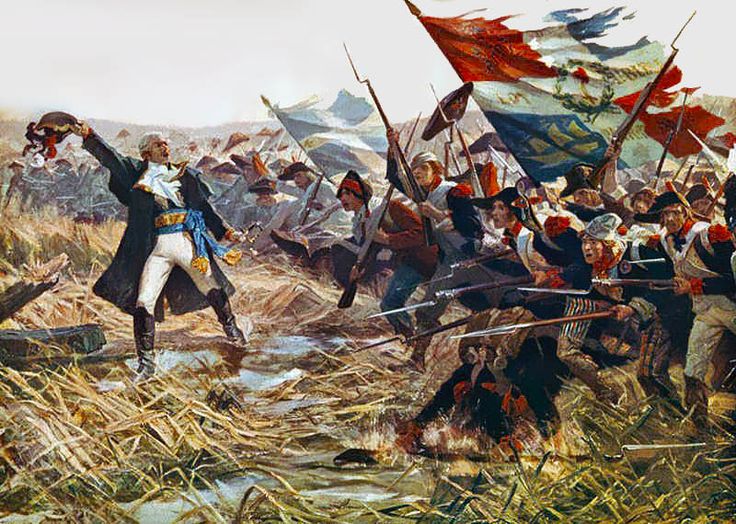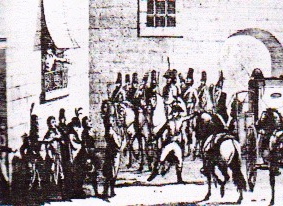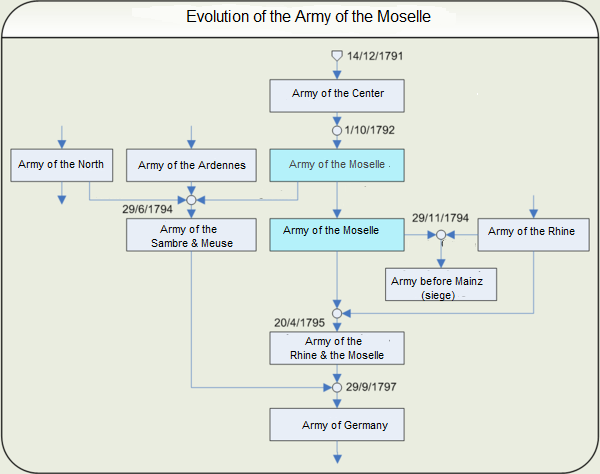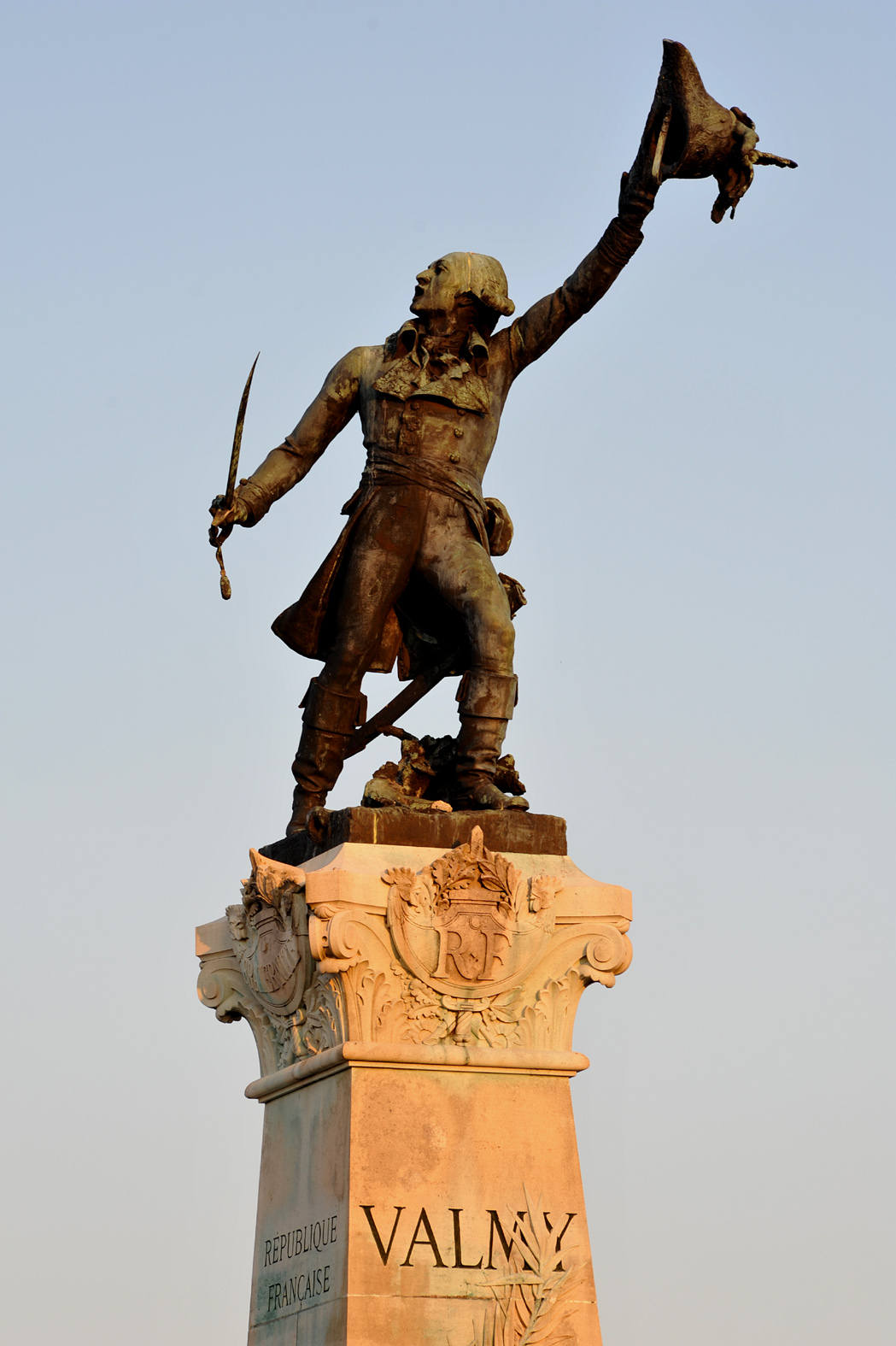|
Beurnonville
Pierre de Ruel, marquis de Beurnonville (10 May 1752 – 23 April 1821) was a French general during the French Revolutionary Wars and later a marshal of France and Deputy Grand Master of Grand Orient de France.Dictionnaire de la Franc-maçonnerie, page 138 (Daniel Ligou, Presses universitaires de France, 2006) Biography Bournonville was born at Champignol-lez-Mondeville, Aube. After service in the colonies, he married a wealthy Creole, Geneviève Gillot L'Étang. After his return to France, he purchased the post of lieutenant of the Swiss Guard of the count of Provence. During the French Revolution he was named lieutenant-general, and took an active part in the battles of Valmy and Jemmapes. Minister of War in February 1793, he denounced his old commander, Charles François Dumouriez, to the Convention, and was one of the four deputies sent to watch him. Handed over by Dumouriez to the Austrians on 3 April 1793, Beurnonville was not exchanged until November 1795. He entered t ... [...More Info...] [...Related Items...] OR: [Wikipedia] [Google] [Baidu] |
Battle Of Jemmapes
The Battle of Jemappes (6 November 1792) took place near the town of Jemappes in Hainaut, Austrian Netherlands (now Belgium), near Mons during the War of the First Coalition, part of the French Revolutionary Wars. One of the first major offensive battles of the war, it was a victory for the armies of the infant French Republic, and saw the French Armée du Nord, which included many inexperienced volunteers, defeat a substantially smaller regular Austrian army. General Charles François Dumouriez, in command of an army of French Revolutionary volunteers, faced the Imperial army of Field Marshal Duke Albert of Saxe-Teschen and his second-in-command François de Croix, Count of Clerfayt. The French, who outnumbered their opponents by about three-to-one, launched a series of enthusiastic but uncoordinated attacks against the Austrian position on a ridge. At length, the French seized a portion of the ridge and the Austrians were unable to drive them away. Saxe-Teschen conceded d ... [...More Info...] [...Related Items...] OR: [Wikipedia] [Google] [Baidu] |
Battle Of Jemappes
The Battle of Jemappes (6 November 1792) took place near the town of Jemappes in Hainaut, Austrian Netherlands (now Belgium), near Mons during the War of the First Coalition, part of the French Revolutionary Wars. One of the first major offensive battles of the war, it was a victory for the armies of the infant French Republic, and saw the French Armée du Nord, which included many inexperienced volunteers, defeat a substantially smaller regular Austrian army. General Charles François Dumouriez, in command of an army of French Revolutionary volunteers, faced the Imperial army of Field Marshal Duke Albert of Saxe-Teschen and his second-in-command François de Croix, Count of Clerfayt. The French, who outnumbered their opponents by about three-to-one, launched a series of enthusiastic but uncoordinated attacks against the Austrian position on a ridge. At length, the French seized a portion of the ridge and the Austrians were unable to drive them away. Saxe-Teschen conceded d ... [...More Info...] [...Related Items...] OR: [Wikipedia] [Google] [Baidu] |
Army Of Sambre-et-Meuse
The Army of Sambre and Meuse (french: Armée de Sambre-et-Meuse) was one of the armies of the French Revolution. It was formed on 29 June 1794 by combining the Army of the Ardennes, the left wing of the Army of the Moselle and the right wing of the Army of the North. Its maximum paper strength (in 1794) was approximately 120,000. After an inconclusive campaign in 1795, the French planned a co-ordinated offensive in 1796 using Jean-Baptiste Jourdan's Army of the Sambre et Meuse and the Army of the Rhine and Moselle commanded by his superior, Jean Victor Moreau. The first part of the operation called for Jourdan to cross the Rhine north of Mannheim and divert the Austrians while the Army of the Moselle crossed the southern Rhine at Kehl and Huningen. This was successful and, by July 1796, a series of victories forced the Austrians, commanded by Archduke Charles to retreat into the German states. By late July, most of the southern German states had been coerced into an armisti ... [...More Info...] [...Related Items...] OR: [Wikipedia] [Google] [Baidu] |
Marshal Of France
Marshal of France (french: Maréchal de France, plural ') is a French military distinction, rather than a military rank, that is awarded to generals for exceptional achievements. The title has been awarded since 1185, though briefly abolished (1793–1804) and for a period dormant (1870–1916). It was one of the Great Officers of the Crown of France during the and Bourbon Restoration, and one of the Grand Dignitaries of the Empire during the First French Empire (when the title was Marshal of the Empire, not Marshal of France). A Marshal of France displays seven stars on each shoulder strap. A marshal also receives a baton: a blue cylinder with stars, formerly fleurs-de-lis during the monarchy and eagles during the First French Empire. The baton bears the Latin inscription of ', which means "terror in war, ornament in peace". Between the end of the 16th century and the middle of the 19th century, six Marshals of France were given the even more exalted rank of Marshal General ... [...More Info...] [...Related Items...] OR: [Wikipedia] [Google] [Baidu] |
Armée Du Nord
The Army of the North or Armée du Nord is a name given to several historical units of the French Army. The first was one of the French Revolutionary Armies that fought with distinction against the First Coalition from 1792 to 1795. Others existed during the Peninsular War, the Hundred Days and the Franco-Prussian War. Campaigns 1791 to 1797 At the creation of the Army of the North on 14 December 1791, the government of the Kingdom of France appointed Jean-Baptiste Donatien de Vimeur, Comte de Rochambeau, as its commander. Rochambeau was replaced in May 1792, and he retired from service. The suspicious government of the First French Republic later charged him with treason and he barely escaped execution. In 1792-1794, the guillotine awaited military commanders who either failed, belonged to the nobility, or displayed insufficient revolutionary zeal. In the Army of the North these unfortunates included Nicolas Luckner, Adam Custine, and Jean Houchard. Under Charles François D ... [...More Info...] [...Related Items...] OR: [Wikipedia] [Google] [Baidu] |
Charles François Dumouriez
Charles-François du Périer Dumouriez (, 26 January 1739 – 14 March 1823) was a French general during the French Revolutionary Wars. He shared the victory at Valmy with General François Christophe Kellermann, but later deserted the Revolutionary Army, and became a royalist intriguer during the reign of Napoleon as well as an adviser to the British government. Dumouriez is one of the names inscribed under the Arc de Triomphe, on Column 3. Early life Dumouriez was born in Cambrai, on the Scheldt River in northern France, to parents of noble rank. His father, Antoine-François du Périer, served as a commissary of the royal army, and educated his son most carefully and widely. The boy continued his studies in Paris at the ''Lycée Louis-le-Grand'', and in 1757 began his military career as a volunteer in the campaign of Rossbach, where he served as a cornet in the ''Régiment d'Escars''. He received a commission for good conduct in action, and served in the later German cam ... [...More Info...] [...Related Items...] OR: [Wikipedia] [Google] [Baidu] |
Army Of The Moselle
The Army of the Moselle (''Armée de la Moselle'') was a French Revolutionary Army from 1791 through 1795. It was first known as the ''Army of the Centre'' and it fought at Valmy. In October 1792 it was renamed and subsequently fought at Trier, First Arlon, Biesingen, Kaiserslautern, Froeschwiller and Second Wissembourg. In the spring of 1794 the left wing was detached and fought at Second Arlon, Lambusart and Fleurus before being absorbed by the ''Army of Sambre-et-Meuse''. In late 1794, the army captured Trier and initiated the Siege of Luxembourg. During the siege, the army was discontinued and its divisions were assigned to other armies. History Originally known as the ''Army of the Centre'', it was renamed by decree of the National Convention on 1 October 1792 and kept under that name in the decrees of 1 March and 30 April 1793. By the decree of 29 June 1794 its left wing joined with the ''Army of the Ardennes'' and the right wing of the ''Army of the North'' to form the ... [...More Info...] [...Related Items...] OR: [Wikipedia] [Google] [Baidu] |
Champignol-lez-Mondeville
Champignol-lez-Mondeville () is a commune in the Aube department in north-central France. Population See also *Communes of the Aube department The following is a list of the 431 communes of the Aube department of France. The communes cooperate in the following intercommunalities (as of 2020):Communes of Aube Aube communes articles needing translation from French Wikipedia {{Aube-geo-stub ... [...More Info...] [...Related Items...] OR: [Wikipedia] [Google] [Baidu] |
Count Of Provence
The land of Provence has a history quite separate from that of any of the larger nations of Europe. Its independent existence has its origins in the frontier nature of the dukedom in Merovingian Gaul. In this position, influenced and affected by several different cultures on different sides, the Provençals maintained a unity which was reinforced when the region was made a separate kingdom during the Carolingian decline of the later ninth century. Provence was eventually joined to the other Burgundian kingdom, but it remained ruled by its own powerful, and largely independent, counts. In the eleventh century, Provence became disputed between the traditional line and the counts of Toulouse, who claimed the title of "Margrave of Provence". In the High Middle Ages, the title of Count of Provence belonged to local families of Frankish origin, to the House of Barcelona, to the House of Anjou and to a cadet branch of the House of Valois. After 1032, the county was part of the Holy Ro ... [...More Info...] [...Related Items...] OR: [Wikipedia] [Google] [Baidu] |
French Revolution
The French Revolution ( ) was a period of radical political and societal change in France that began with the Estates General of 1789 and ended with the formation of the French Consulate in November 1799. Many of its ideas are considered fundamental principles of liberal democracy, while phrases like ''liberté, égalité, fraternité'' reappeared in other revolts, such as the 1917 Russian Revolution, and inspired campaigns for the abolition of slavery and universal suffrage. The values and institutions it created dominate French politics to this day. Its causes are generally agreed to be a combination of social, political and economic factors, which the ''Ancien Régime'' proved unable to manage. In May 1789, widespread social distress led to the convocation of the Estates General, which was converted into a National Assembly in June. Continuing unrest culminated in the Storming of the Bastille on 14 July, which led to a series of radical measures by the Assembly, i ... [...More Info...] [...Related Items...] OR: [Wikipedia] [Google] [Baidu] |
Battle Of Valmy
The Battle of Valmy, also known as the Cannonade of Valmy, was the first major victory by the army of France during the Revolutionary Wars that followed the French Revolution. The battle took place on 20 September 1792 as Prussian troops commanded by the Duke of Brunswick attempted to march on Paris. Generals François Kellermann and Charles Dumouriez stopped the advance near the northern village of Valmy in Champagne-Ardenne. In this early part of the Revolutionary Wars—known as the War of the First Coalition—the new French government was in almost every way unproven, and thus the small, localized victory at Valmy became a huge psychological victory for the Revolution at large. The outcome was thoroughly unexpected by contemporary observers—a vindication for the French revolutionaries and a stunning defeat for the vaunted Prussian army. The victory emboldened the newly assembled National Convention to formally declare the end of monarchy in France and to establish th ... [...More Info...] [...Related Items...] OR: [Wikipedia] [Google] [Baidu] |
Minister Of Defence (France)
The Minister of the Armed Forces (french: Ministre des armées, ) is the leader and most senior official of the French Ministry of the Armed Forces, tasked with running the French Armed Forces. The minister is the third highest civilian having authority over France's military, behind only the President of the Republic and the Prime Minister. Based on the governments, they may be assisted by a minister or state secretary for veterans' affairs. The office is considered to be one of the core positions of the Government of France. Since 20 May 2022, the Minister of the Armed Forces has been Sébastien Lecornu, the 45th person to hold the office. History The minister in charge of the Armed Forces has evolved within the epoque and regimes. The Secretary of State of War was one of the four specialised secretaries of state established in France in 1589. This State Secretary was responsible for the French Army (similarly, the Naval Ministers of France and the Colonies was create ... [...More Info...] [...Related Items...] OR: [Wikipedia] [Google] [Baidu] |








.jpg)